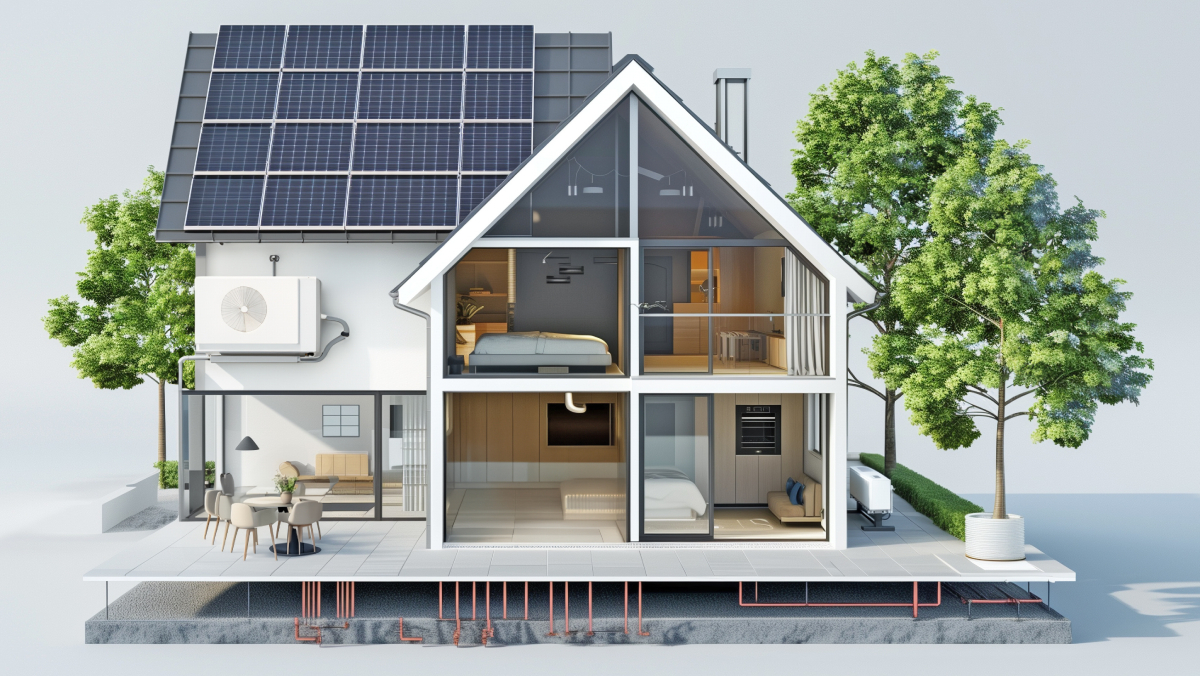Shahid Rahman, EMEA – Data Centre Strategic Account Lead (Engineered IT Cooling Solutions) at Mitsubishi Electric, explores how heat reuse can revolutionise data centre efficiency.
In our digital age, data centres are pivotal infrastructure. They facilitate the flow of information that we rely on in almost every aspect of our lives, including commerce, government, education and even entertainment. However, their high level of energy consumption and environmental impact pose significant challenges, and data centre users are increasingly concerned with their carbon footprint.
This means there is an urgent need to decarbonise data centres so that the UK can reach net zero by 2050. Other countries have already started to implement measures to reduce their carbon footprint. For example, the Dutch government banned new data centre hyperscale projects for 9 months, and the Irish government has introduced policies to scrutinise data centres more closely.
However, slowing down or halting data centre development is not the only way to minimise the environmental impact. Embracing heat recovery solutions is another method to make data centres more energy efficient and sustainable and move towards a decarbonised future. Such solutions allow data centre developers and operators to provide robust, fault-free services while reducing energy use and emissions.
Sustainable heating solutions
One way to minimise the carbon footprint of data centres is by reusing the heat that they generate. Previously, the priority has been to use cooling technologies that meet energy-reduction targets. Now, we must shift the focus to the reuse of heat energy that actually gives data centres the potential to decarbonise further and build a more sustainable future. In fact, excess heat from data centres can be used to heat other nearby buildings and homes, and provide them with a greener heating source.
Certain countries have already started leading the way in this area. For example, the new German Energy Efficiency Act has made reusing ‘waste’ heat a requirement and has set an ambitious target of data centres achieving 10% heat reuse by 2026 and 20% by 2028.
Depending on a data centre’s heat output and location, several approaches to heat recovery can be applied. One is district heating and cooling as a service, which consists of having a heat pump recycle the water from the district heat network to cool the data centre. The heat pump then collects the waste heat from the cooling activity and pushes it to the city network. The reheated hot water from the data centre is combined with the water in the general heat network, increasing the return temperature. Overall, less energy is consumed across the whole heat network, and energy costs and the carbon footprint are reduced.
Heat reuse has important benefits, and many leading data centre developers and owners are embracing this innovative approach. For example, at Amazon’s Tallaght data centre in Dublin, the heat generated by servers is transferred to an air-handling unit and then recycled to warm water. The water is then directed to an energy centre outside the warehouse, where the temperature is further increased using heat pumps. As a result, carbon dioxide emissions are reduced by 1,500 tons, and over 505,000 square feet of local public buildings, 32,800 square feet of commercial buildings, and 133 apartments are provided with heating.
Optimising waste heat reuse
Reducing the environmental impact of data centres requires green technologies such as heat pumps and heat networks which provide heating and hot water more efficiently.
In particular, heat pumps are essential to make the most of waste heat. Data centre output heat is around 30°C to 35°C. Heat pumps can use water at this temperature as a heat source, bringing the water to 70°C or even 80°C. This heat energy can be used in the data centre (or nearby buildings and homes) to meet domestic hot water (DHW) demand in washrooms and showers, for example.
Alternatively, when it comes to providing water to homes located further from the data centre, the heat energy can be used on a wider scale in heat networks connected to the city. Households can then be provided with heat and hot water via a large network of pipes. The Climate Change Committee (CCC) estimates that 18% of UK heat could come from heat networks by 2050 (up from 2% today).
Key considerations
Data centre developers and operators must keep in mind that there are a number of considerations to make before embracing heat reuse. When looking at linking the data centre to a new or existing heat network, heat mapping is the first step. This is a way to ensure that there is an outlet for the waste heat a reasonable distance from the data centre – or that there already is a heat network that can use extra capacity.
The second step is to evaluate the cooling demand of the data centre across the year and to size and specify cooling equipment. For example, buildings that are close to the data centre may not have high heat requirements, while heat networks which supply domestic customers have higher and more predictable heat demand profiles. Additionally, buildings such as hospitals, schools and leisure centres are also sources of heat demand that must be considered.
The ideal solution is a water-to-water heat pump or a heat pump chiller. The heat output of the heat pump can then be calculated to establish the annual heat output profile. So, when setting out these projects, designers are looking for a successful match of data centre heat output and local heating requirements.
Paving the way to decarbonisation
By repurposing excess heat using heat pump technology and district heating networks, not only can data centres enhance energy efficiency, but also contribute to advancing sustainable heating solutions for communities. So, as we navigate the transition to a decarbonised future, it is imperative to recognise that data centres are not simply big energy users, but have a crucial role to play in paving the way towards a greener, more resilient future.


